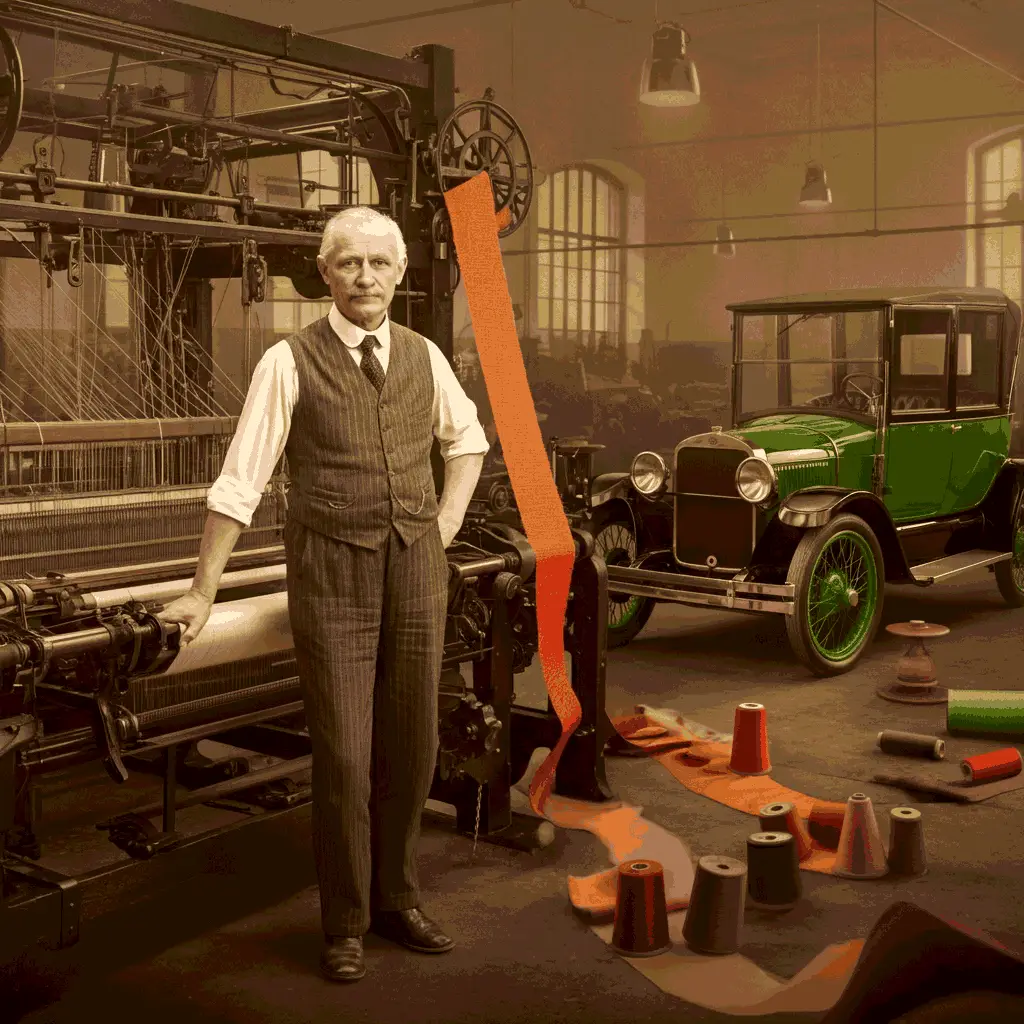For the discerning leatherworker, the journey from a brilliant idea to a finished masterpiece begins with a single, crucial choice: the selection of the raw material. In the world of high-end leather crafting, few terms carry as much weight as Zuschneidfelle. This German word represents more than just leather; it signifies a category of premium, prepared hides specifically intended for precision cutting and superior craftsmanship. This guide will delve into the essence of Zuschneidfelle, exploring its history, production, and application, empowering you to select and use these magnificent materials with confidence and skill.
What Does “Zuschneidfelle” Actually Mean?
Breaking down the compound German word provides immediate clarity. “Zuschnitt” translates to “cutting” or “cut,” while “Felle” is the plural for “hides” or “skins.” Therefore, Zuschneidfelle literally means “cutting hides.” It’s a term that cuts to the chase, describing tanned animal skins that have been prepared and graded to be cut into smaller components for products like bags, wallets, belts, and upholstery.
A common misinterpretation is to equate it with any piece of leather. However, true Zuschneidfelle implies a pre-selection for quality. It suggests a hide with a uniform thickness, a clean surface, and minimal defects, making it the ideal starting point for projects where waste is unacceptable and perfection is the goal.
A Stitch in Time: The History of Zuschneidfelle
The tradition of meticulously preparing and cutting leather stretches back centuries, with European guilds, particularly in Germany and France, setting early standards for quality. German artisans, renowned for their precision and methodological approach, formalized the concept of Zuschneidfelle. They understood that the integrity of the final product was inextricably linked to the quality and preparation of the raw hide.
Historically, the process was entirely manual, relying on the skilled hands of tanners and cutters. The industrial revolution introduced machinery for splitting and shaving hides, allowing for more consistent thickness—a key characteristic of modern Zuschneidfelle. Despite these advances, the core principle remains: selecting the finest sections of a hide for demanding craft and design work, a philosophy that German workshops perfected and popularized globally.
Not All Hides Are Created Equal: Types and Grades of Zuschneidfelle
Understanding the grading of leather is fundamental to choosing the right Zuschneidfelle. The grade determines not only the aesthetics but also the durability and character of your finished piece.
-
Full-Grain Leather: This is the pinnacle of Zuschneidfelle. It includes the entire grain layer, showcasing the hide’s natural markings and pores. It is the most durable and develops a beautiful patina over time. When you seek longevity and character, full-grain is the unequivocal choice.
-
Top-Grain Leather: Slightly more affordable, this grade has the very top surface sanded away to remove imperfections. It is more pliable and has a more uniform finish than full-grain but is less durable.
-
Corrected-Grain Leather: Hides with significant flaws are embossed with an artificial grain pattern. While consistent in appearance, this category lacks the natural beauty and long-term resilience of higher grades.
Common animal sources include robust cowhide for bags and belts, supple goatskin for gloves and accessories, and ultra-soft lambskin for luxury apparel.
From Raw Hide to Refined Material: The Tanning Process
The transformation of raw animal skin into workable Zuschneidfelle is a multi-stage alchemy. Key steps include:
-
Soaking & Liming: Rehydrates the hide and removes hair and fats.
-
Tanning: This is the core process that stabilizes the proteins, preventing decomposition. The tanning method defines the leather’s personality.
-
Vegetable Tanning: Uses natural tannins from trees and plants. This method produces a firm, malleable leather that ages beautifully and is preferred for tooling and heavy-duty goods.
-
Chrome Tanning: Uses chromium salts, making the process faster and resulting in a very soft, water-resistant, and pliable leather. It’s common for garments and accessories but is less environmentally friendly.
-
-
Dyeing & Finishing: The leather is colored and treated with coatings to achieve the desired surface feel and level of protection.
The goal for Zuschneidfelle is to achieve a perfect balance of flexibility, texture, and finish that allows for clean, precise cuts.
The Art of the Cut: Working with Zuschneidfelle
Precision is paramount. Using the right tools and techniques ensures you honor the quality of your Zuschneidfelle.
-
Tools: A sharp, rotary cutter is excellent for long, straight cuts, while a swivel knife offers unparalleled control for curves. A metal ruler and a self-healing cutting mat are non-negotiable for accuracy.
-
Technique: Always pattern your project first. Carefully lay your templates on the hide, working around natural scars and wrinkles to minimize waste. For intricate designs, skiving (thinning the edges) is a crucial skill for clean seams.
-
Pro Tip: “Case” your vegetable-tanned leather by lightly dampening it before cutting or stamping. This technique opens up the fibers, allowing for cleaner impressions and cuts.
From Workshop to Wardrobe: Applications of Zuschneidfelle
The versatility of high-quality Zuschneidfelle is astounding. In modern crafting, it is the foundation for:
-
Fashion: Luxurious handbags, durable wallets, elegant jackets, and fine footwear.
-
Accessories: Belts, watch straps, and key fobs that last a lifetime.
-
Interiors: High-wear upholstery for classic furniture and automotive interiors.
-
Specialties: Traditional bookbinding and bespoke leather journals.
Your Guide to Choosing the Perfect Zuschneidfelle
Selecting the right hide is a strategic decision. Consider these factors:
-
Material & Grain: Match the grade to your project’s needs—full-grain for heirlooms, top-grain for supple goods.
-
Thickness: Measured in ounces or millimeters. A thicker hide (4-5 oz) is ideal for belts and structural bags, while a thinner one (2-3 oz) is perfect for linings and lightweight apparel.
-
Sustainability: Seek out suppliers who are transparent about their sourcing. The Leather Working Group (LWG) provides certifications for environmentally responsible tanneries, a key marker of ethical sustainable leather sourcing.
Weighing the Pros and Cons
Advantages:
-
Durability: Properly cared for, items made from Zuschneidfelle can last for decades.
-
Aesthetic: Offers an unmatched depth, texture, and aging quality that synthetic materials cannot replicate.
-
Flexibility: A vast range of types and finishes exists for nearly any application.
Drawbacks:
-
Cost: High-quality hides are a significant investment.
-
Sourcing: Finding specific, ethically-sourced types can be challenging.
-
Waste: Cutting smaller pieces from a full hide requires skill to manage waste effectively.
Caring for Your Craft: Maintenance and Storage
Your creations deserve longevity. Follow these simple rules:
-
Conditioning: Use a quality leather conditioner every 6-12 months to replenish natural oils.
-
Cleaning: Wipe with a damp cloth. For deeper cleans, use a pH-neutral saddle soap.
-
Protection: Keep away from direct sunlight and heat sources to prevent fading and drying. Store in a cool, dry place with moderate humidity to prevent mold. Stuff bags with acid-free paper to help them retain their shape.
Crafting with a Conscience: Ethical and Environmental Responsibility
The modern leather industry faces valid scrutiny. As a craftsman, your choices matter.
-
Transparency: Support suppliers who provide information on the origin of their tanned animal skins.
-
Eco-Tanning: Favor vegetable-tanned and other eco-alternatives over conventional chrome tanning, which can have a heavier environmental footprint if not managed correctly, as noted by the U.S. Environmental Protection Agency (EPA) regarding industrial waste.
-
Waste Reduction: Plan cuts meticulously and use off-cuts for smaller projects like keychains or patchwork.
Common FAQs About Zuschneidfelle
Q1: What is zuschneidfelle primarily used for?
It is used as the primary material for precision cutting in leathercraft, serving as the foundation for items like handbags, wallets, jackets, and upholstery where high-quality materials are essential.
Q2: How is it different from standard leather?
The term “Zuschneidfelle” implies a pre-graded hide selected for its superior quality, uniformity, and suitability for cutting, whereas “standard leather” can refer to any grade, including lower-quality pieces with significant flaws.
Q3: Which tanning method lasts longer?
Both can last for generations if cared for properly. Vegetable-tanned leather is known for forming a hard-wearing patina, while high-quality chrome-tanned leather offers excellent resistance to water and abrasion.
Q4: Can it be used for clothing?
Absolutely. Supple Zuschneidfelle like lambskin, calfskin, and certain chrome-tanned cowhides are excellent for crafting luxurious and durable leather garments.
Q5: How should I store unused zuschneidfelle?
Lay it flat, rolled (with the hair side out if applicable), in a cool, dark, and well-ventilated area. Avoid plastic bags; use a breathable cloth bag instead.
Conclusion
Zuschneidfelle is more than a material; it is the canvas for the leather artisan. It represents a commitment to quality, a respect for tradition, and an investment in creating items of lasting value. By understanding its nuances—from its historical roots to its modern ethical considerations—you can elevate your craft. Choose your hides wisely, cut with purpose, and create heirlooms that tell a story of skill and sustainability for years to come.
References & Further Reading
-
Wikipedia: Leather
-
Leather Working Group: Environmental Protocol
-
U.S. Environmental Protection Agency: Tannery Effluent Guidelines






